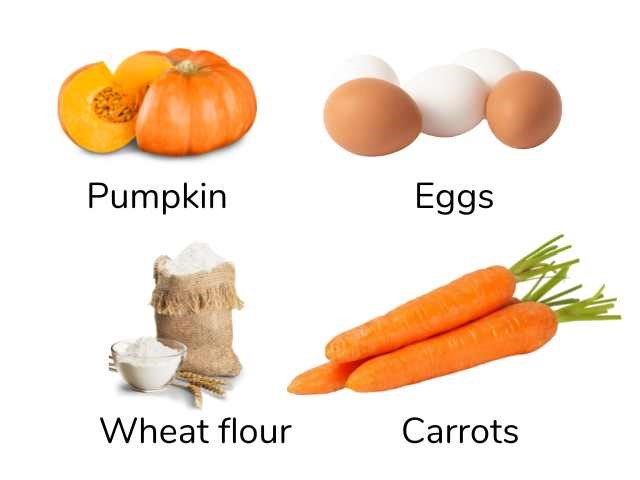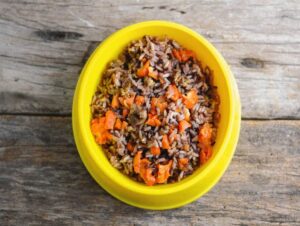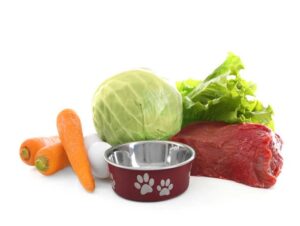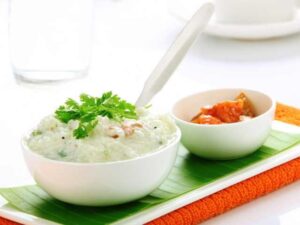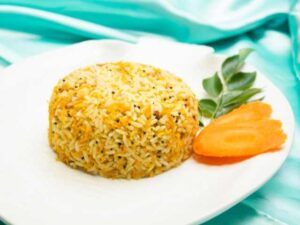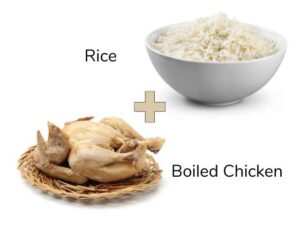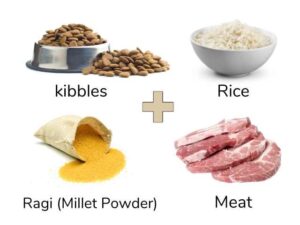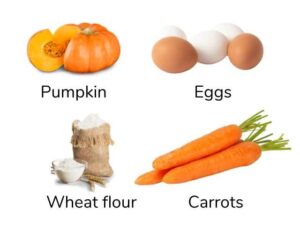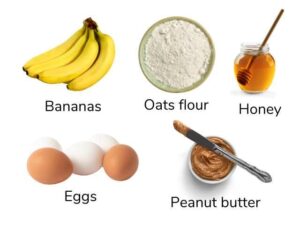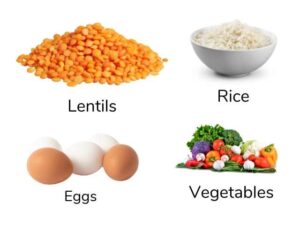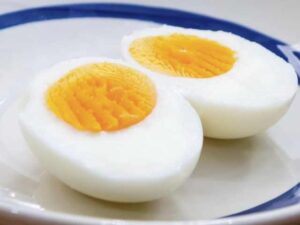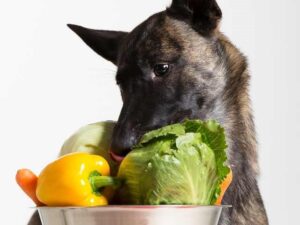HOW TO PREPARE BEST HOME MADE DOG FOOD : PUPPY FEEDING CARE AND MANAGEMENT PRACTICES
The mother should spend most of her time with her puppies during the first few days after birth. For the first month of life, puppies require very little care from the owner because their mother will feed and care for them. In fact, in the vast majority of cases, the pet owner should not interfere with the mother’s care.
The puppies should be kept warm and should nurse frequently. They should be checked every few hours to ensure they are warm and well fed. The mother should be checked to make certain that she is producing adequate and normal-appearing milk.
Weaning’ describes the changeover from one food to another, and for young puppies this is from the mother’s milk to solid foods. If puppies are abandoned then it becomes the responsibility of the owner to get them on the right diet.
- Use only a bitch milk substitute diet.
Cows and goats milk are not suitable milk substitutes, you will need milk similar to that of the dog. When choosing bottle feeding kits, find a teat size that is appropriate, as this may cause problems for feeding.
- Feed your puppies the right amount.
Puppies less than a week old, need feeding every 1-2 hours; and after this phase, every 3-5 hours. By their 3rd week, they can start to lap a milk substitute. The bitch normally cleans around the anus of the puppies to stimulate them to defecate. You can achieve this effect with a moist tissue or cotton wool.
- Regulate the temperature so it doesn’t get too hot or too cold.
Puppies cannot regulate their body temperatures for their first 4 weeks, and need to be kept in a temperature-controlled environment. You can use heating lamps, or hot water bottles and heating pads (be mindful that the heat source is not too hot).
Note: Frequently monitor the puppies, as they may have problems crawling away from the heat source if it gets too hot. If the mother does not stay in the whelping box the majority of the time, the puppies’ body temperatures must be closely monitored. If the puppies are cold, supplemental heating should be provided but caution needs to be taken to avoid burns as puppies do not have the same reactions to heat as adult dogs do. During the first four days of life, the newborn puppies’ box and external environment should be maintained at 85° to 90°F (29.4° to 32.2°C). The temperature may gradually be decreased to 80°F (26.7°C) by the seventh to tenth day and to 72°F (22.2°C) by the end of the fourth week. If the litter is large, the external temperature does not have to be kept as warm. As puppies huddle together, their body heat provides additional warmth.
If the mother feels the puppies are in danger or if there is too much light, she may become anxious and not produce adequate milk. Placing a sheet or cloth over the top of the box to obscure much of the light may resolve the problem. An enclosed box is also an excellent solution. Some dogs, especially first-time mothers, are more nervous than others. Such dogs may attempt to hide their young, even from the owner. Moving the puppies from place to place may endanger the puppies if they are placed in a cold or drafty location. Dogs with this behavior should be caged or confined in a secure, secluded area. This type of mother has also been known to kill her puppies, intentionally or inadvertently, presumably as a means of ‘protecting’ them from danger.
- Here’s what you need to know about the weaning process.
By 3-4 weeks of age, the puppies should eat palatable and highly nutritious puppy food. For the initial part, warm water/milk can be added to the Pedigree Puppy or weaning food to make it sloppy enough for the puppies to lap.
Tip: If there is a reluctant puppy, tempt him by putting food on its lips or near the nose.
- Give your puppies nutritious food till they become young, healthy dogs.
When the puppies are 8 weeks of age, they should be offered puppy food.
Puppies should eat or sleep 90% of the time during the first two weeks of life. If they are crying during or after eating, they are usually becoming ill, are not receiving adequate milk, or the mother’s milk has become infected (mastitis). A newborn puppy is very susceptible to infections and can die within a few hours of becoming ill. If excessive crying occurs, the mother and entire litter should be examined by a veterinarian as soon as possible.
Puppies should gain 5-10% of their body weight daily. When the mother’s milk supply is inadequate to support this, supplemental feeding one to six times per day is recommended and should be performed routinely on any litter with greater than five puppies. There are several excellent commercial milk replacers available. They require no preparation other than warming. These milk replacers should be warmed to 95°to 100° (35° to 37.8°C) before feeding. Its temperature can easily be tested on your forearm: it should be about the same temperature as your skin.
Any milk replacer that is used should contain optimal levels of the omega-3 fatty acid, DHA (docosahexaenoic acid), a nutrient that is important for the development of the puppies’ brains and eyes. Goat milk is not recommended as it is far too low in protein and fat. Supplemental feeding may be continued until the puppies are old enough to eat puppy food on their own.
If the mother does not produce milk or her milk becomes infected, the puppies will cry. If this occurs, an entire litter can die within 24 to 48 hours. Total milk replacement feeding using the mentioned products or adopting the puppies to another nursing mother is usually required. If replacement feeding is chosen, the feeding amounts listed on the product should be used. Puppies less than two weeks of age should be fed every 3-4 hours. Puppies two to four weeks of age do well with feedings every 6-8 hours. Weaning, as described below, should begin at three to four weeks of age.
Puppies are born with their eyes closed. Most puppies will begin to open their eyes within seven to fourteen days of birth. If there is swelling, bulging, or discharge underneath the eyelids, they should be opened gently. A cotton ball dampened with warm water may be used to assist opening the lids. If the swelling is due to infection, pus will exit the open eyelids and should be examined by a veterinarian immediately. If the eyes have not opened within fourteen days of age, the puppy should be examined by a veterinarian.
Puppies should be observed for their rate of growth. They should double their birth weight in about one week. Careful and routine daily to weekly weighing should be performed to ensure the puppies are growing normally. Failure to gain weight may indicate a problem and the need for veterinary care.
At about two weeks of age, puppies should be alert and trying to stand on their own. At three weeks, they generally try to climb out of their box. At four weeks, all of the puppies should be able to walk, run, and play.
Puppies should begin eating solid food about 3 1/2 to 4 1/2 weeks of age. Initially, make gruel by mixing a milk replacer in puppy food soaked in water and place this mixture in a flat saucer. The puppies’ noses should be carefully dipped into the mixture two or three times per day until they begin to lap; this usually takes one to three days. Next, canned or dry puppy food should be placed in the milk replacer or water until it is soggy. As the puppies lap, they will also ingest the food. The amount of moisture should be decreased daily until they are eating the canned or dry food with little or no moisture added (usually by four to six weeks of age).
Puppies are protected against many canine diseases before and shortly after birth by passive antibody transfer from their mother. Some antibodies cross the placenta and enter the puppies’ circulation. However, the majority of antibodies are provided in the mother’s first milk known as colostrum. These maternal antibodies protect the puppies against the diseases to which the mother is immune during the first few weeks of life. This explains why it is often recommended to booster the mother’s vaccinations within a few months prior to breeding.
Although very protective, maternal antibodies last for only a few weeks; after this time, the puppy becomes susceptible to disease. The vaccination program should be started at about six to eight weeks of age. This is the age when many maternal antibodies are beginning to die and the puppy becomes susceptible to infectious disease. Puppies should be vaccinated against canine distemper, hepatitis, parvovirus, parainfluenza virus, and rabies. Other vaccines are also available for certain situations, and will be discussed at the time of the first visit for vaccinations.
Maternal antibodies are passed in the mother’s milk only during the first one to three days after delivery. If, for any reason, the puppies do not nurse during this important period of time, their vaccinations should begin earlier than six weeks of age, depending on likely disease exposure. A veterinarian can make specific recommendations for each particular situation.
How to Bottle Feed Puppies
Whenever possible, puppies should be nursed and raised by their mothers. There are times, however, when bottle feeding puppies becomes necessary (such as when a pup is orphaned). But bottle feeding the wrong thing, the wrong way, the wrong amount or on the wrong schedule can lead to illness or even death.
Here is how to bottle feed puppies:
- Milk replacers designed specifically for puppies is the best alternative to mother’s milk. You’ll also need several pet nurser bottles as well as a variety of nipples.
- Reconstitute powdered milk replacer per label instructions or use a premixed variety.
- Warm the bottle by placing it in a cup of hot water until the milk reaches body temperature.
- Test the nipple before every feeding to ensure that milk only drips from the opening.
- Puppies are best fed in a belly-down position. Place the pup on your lap or on a towel on a table and insert the nipple into their mouth. Tip the bottle so that any air inside stays away from the nipple.
- Continue feeding until the puppy’s suckling stops or slows dramatically. Put a finger against the puppy’s throat to feel if they are still swallowing.
- Newborn puppies need to eat every 2 to 3 hours, but as long as they get four to five full-sized meals in the course of the day, nighttime feedings are generally not necessary.
- A 2 to 4-week-old puppy feeding schedule should consist of feedings every 6 to 8 hours.
- Young puppies must be stimulated to urinate and defecate. Wipe the area around the anus and penis or vulva with a warm, wet washcloth after every feeding.
It is usually not necessary to determine exactly how much puppies are eating as long as they gain weight daily and don’t act hungry (crying, for example) until just before the next feeding is due.
Commercially available milk replacers provide puppy feeding charts or guidelines for what a typical puppy might eat over the course of a day—for example, 2 teaspoons per 4 ounces bodyweight. Follow these closely, as puppies who drink too much at one feeding can develop diarrhea; and if you have any questions or concerns, talk to your veterinarian.
How to Wean Puppies
As for a 5-week-old puppy feeding schedule, this is around when most people will start to wean their puppies.
- For what to feed puppies who are weaning, use a commercially made, high-quality balanced food. Kibble should be softened with water or broth to a soupy texture, or you can add a little extra water to wet puppy food.
- To get the puppies interested, dip your finger into the mush and then let them lick it. Puppies quickly learn to lap up the food.
- Make sure each pup is getting their fair share. Separate dog bowls given under supervision is ideal.
- While feeding puppies your weaning mix, there is no standard set of directions for how much a puppy should eat. Continue to weigh your puppies daily. You want pups that are growing but not overweight.
- If the puppies are still nursing a bit, figure on offering them three or four meals a day as a puppy feeding schedule. Toy and small breed pups may need some extra snacks, as they are susceptible to hypoglycemia (low blood sugar).
- Nutritional weaning is complete when the puppies are eating only puppy food and no longer nursing at all. When litters and moms are kept together, pups are usually eating only puppy food at around 8 weeks of age.
Feeding Your Pup After Weaning
Once puppies are fully weaned, continue to watch their diet and their weight. As for what to feed puppies, stick to puppy dog food (as opposed to adult formulas) because they are specifically formulated for ideal growth, with a balanced diet and supplements for brain development—to meet your puppy’s nutrition needs.
What food to feed your puppy
Two forms of puppy food typically come to mind—kibble (or dry food) and canned (or wet) food. However, there are now several other healthy options available, including dehydrated and fresh or frozen food.
Canned and fresh food options typically have a higher moisture content than kibble or dehydrated food, which can make it easier for puppies who are still using baby teeth to chew and swallow their food. If you want to stick to kibble, it helps to moisten the food with water before your young puppy begins eating.
In regards to nutrition, the most important thing to ensure is that your puppy gets a suitable mix of protein, fat, calcium and calories. Since puppies have different caloric and nutritional needs than adult dogs, a diet specially formulated for puppies is often the clearest option. However, there are also “all-life stages” dog food formulas that provide a well-balanced meal for dogs of all ages and can be fed from puppyhood into adulthood.
How to Prepare Homemade Puppy Food
People who are pet lovers want to give their dog the best to eat but most of us will agree that dog food available in the market is either too expensive or not of a satisfying quality. To protect your dog from deficiencies and diseases, it is very important to give a balanced diet to your dog. If there is a lack of essential vitamins and minerals in their diet, it can impact their coat, behaviour and development. In puppies, it can happen in just a few months.You can now make your dog’s food at home without having to spend a lot of money.
In general, puppies need about twice as many calories per day than their adult counterparts. According to the Committee on Nutrient Requirements of Cats and Dogs of the National Academy of Science, a 10-pound puppy that is expected to weigh 33 pounds at adulthood needs to eat about 990 calories per day.
In addition, puppies need more protein, fat, vitamins and minerals than adult dogs.
First, take care of the following things while selecting ingredients.
A homemade puppy diet should contain the proper balance of:
- Protein, such as chicken, turkey, fish, lean beef
- Carbohydrates, like rice, pasta, potatoes
- Vegetables, such as peas, green beans, carrots
- Fat, often in the form of vegetable oil
- Vitamin/mineral supplements (purchased from a reputable company)
· Selecting meat
- Meat is the main ingredient for homemade dog food. Dogs are carnivores and need a protein based diet. Meat options that you can give to your dog are: lamb, pork, turkey, chicken, etc. Do not compromise on the quality of the meat when you are taking it for your dog .The fat content in the meat should not be more than 15-20%. You can also feed your dog fish but occasionally.
· Vegetables
- Vegetables can make up only about 1/4 of a dog’s meal .It can provide dogs with vitamins, minerals and fiber. However a better way of adding vegetables to you dog’s diet is to puree them instead of chopping because in this way they’ll get more nutrition. Vegetables that you can include are : squash, pumpkin, zucchini, carrots, peas, beets, yams, broccoli, cauliflower, green beans and sweet potato.However you can not give every vegetable to your dog and the vegetables that you need to avoid are: onion, potato, tomato, bell peppers, spinach, raw beans, garlic, leek, chard and beet greens.
· Avoid carbohydrates
Dogs do not have digestive enzymes to break down carbohydrates. They contain no nutritional value for dogs and basically just go right through the digestive tract which can harm them. Carbohydrates are often the main cause of many canine diseases, including obesity, inflammatory bowel disease, kidney disease and allergies hence you need to avoid feeding them corn, wheat and potatoes.
· Add the right supplements
Even the best recipes which you think will have all the nutrients actually don’t cover everything. Your dog needs supplements if you’re feeding him homemade food. Talk to a nutritionist before giving any supplements to your dog.
Top 5 home-made dog food options(veg/non-veg)
Have you run out of dry food or just got your pup and don’t know what to feed him/her or is your dog just bored of eating the same food over and over again, needing variety? If yes,then you are at the right place. We are here to talk about a few home-cooked food options which are very much suitable for your pet and healthy as well.As a responsible dog owner, one should know that not all human food options are suitable for your dog, for example-Chocolate, lemon, grapes, raisins, onions, alcoholic beverages, tomato are poisonous to your dog even in small quantity. Many food items which the human digestive system can handle well may not be suitable for your dog like cow milk which causes frequent loose motion.
However regardless of your dog age/breed, below listed dog food recipes work wonders for any dog and they like these very much.
Non-veg food options:-
1)Boiled chicken and rice– Dogs love this food. It isn’t even hard to cook. Buy chicken, clean well, no need to add spices/salt, add potato/carrot if available, boil in a pressure cooker, food is ready. You can even give this every day to your dog without any harm. There are some dogs who don’t like any dry food regardless of which brand you try. You can give them this food or mix dry food with plain boiled chicken. Your dog is likely to love it and if he doesn’t, chances are he has digestive problems resulting in loss of appetite. Although I have tried 4-5 brands of dry food, I give boiled food to each of my 4 dogs every day at noon and give dry food only at night. Ideally you should give full meals to your dog not more than twice a day. In case you are unable to buy dry food and want to give this as a regular diet, you can do so without any harm, just make sure to add a few supplements like beaphar salmon oil . This is because, while chicken has abundant amount of protein, it lacks omega fatty acids otherwise found in fish. For puppies without developed teeth, make sure to avoid hard bones. You can also add a variety of vegetables like broccoli, spinach, cabbage, carrots, beans, apple. Also the chicken broth you get while boiling chicken, be sure to include it in the meal.
2)Boiled eggs- Although every breed of dog doesn’t like eggs, they are completely beneficial for your dog and you can give him/her boiled egg . Do not give chapatis/bread/human biscuits to your dog as they are rich in gluten.
3)Peanut butter/cheese– Dogs like peanut butter. It is rich in protein, you can give it to your dog although it’s not so much popular in India. Also, make sure the brand you are using is free from hydrogenated oils, excessive salt and harmful sweeteners like xylitol. Cheese too works well as treats in small quantity. Be sure to not feed too much cow milk cheese as it may cause loose motion. Also, cheese is rich in fat and some dogs may be lactose intolerant. Curd and yogurt in small quantities are acceptable.
4)Beef balls/beef stew– They are a good source of protein and vitamins. To spice things up, you may add vegetables, eggs or rice for a fuller meal.
5)Fish-Salmon, tuna, rohu or tilapia can also be given provided your dog likes them as some dogs hate the smell first time. Fish can be an excellent source of omega fatty acids but don’t make fish a daily meal.
Turkey is also harmless for dogs.
Veg food options:-
While I completely hate the idea that if you/your family is vegetarian, same should be done for your dog as dogs, in general, are carnivores, here are few veg food options which dogs are known to like.You can give boiled sweet potato, ghee(in limited quantity), potato, carrot, ginger. Although 90% dogs won’t like such horrendous meal with no meat at first go, you should consider yourself lucky if you dog properly eats or shows interest in a 100% veg home-coked food. If he/she doesn’t and you have no option of including non-veg food in your house, you can look for veg dry food like the one from drools.
Fruits-Although fruits won’t be able to replace the daily meal, here are few fruits that are completely harmless even beneficial for your dog. You can give your dog sugarcane, watermelon, guava, cucumber, mango, pineapple or banana. Just avoid citrus fruits like lemon, orange, and fruits that are too salty or sour. You should be in the clear. Care should be taken that you don’t give seeds of big fruits like mango although mango pulp/skin is good. Apple can be given but seeds need to be taken out as they contain traces of cyanide which is poisonous for your dog even in small quantity.
Recipe that you can make for your pup!
- Ingredients
- 6 cups water
- 1 pound ground meat
- 2 cups uncooked brown rice
- 1 teaspoon dried rosemary
- 1 cup broccoli, carrots and cauliflower
- The steps
- – Place the water, ground meat, rice and rosemary in a pan on medium flame.
- – Stir until the meat gets evenly distributed in the mixture.
- – Bring it to boil over high heat, then reduce heat to low.
Indian Homemade Recipes For Dogs With Healthy Diet
One of the main struggles for millennials is the ongoing confusion of what exactly to feed your dog. Over the centuries in Indian households, we’re seen pet parents feeding dogs basically the leftovers of milk and chapatti. Indian kitchens have restricted food options for dogs, and pet parents often forget the importance of the nutritional requirements of young puppies or dogs. In the growing years, dogs must be provided with an adequate amount of nutritional food as it helps them to achieve a healthy lifestyle. In this blog, we have talked about some delicious Indian homemade recipes for dogs that pet parents can easily make at home. Pet parents don’t need to worry about these recipes as these recipes are vet-approved. Yet every dog has a different physical structure so It would be good to ask their vet before they try these recipes.
In recent years, Indian pet parents have become more conscious than ever and look out for healthy options for pets. Packed or dry food in the market can be expensive, so switching to healthy homemade food can be a great choice. Also, it breaks the boring monotony of having the same food can be full of boredom. We’ve tried to compile a list of Indian recipes for your dogs that they might enjoy trying out
And these dishes are easy to prepare as all the ingredients are available in an Indian kitchen. Not only easy to prepare, but homemade food is very economical compared to packed food. You can follow up with all the recipes mentioned below with utmost trust. We’ve added a vet-approved recipe list for dogs.
Note: Remove wheat from your dog’s diet. A cup of rice with meat and dog-friendly vegetables. Rice and milk are an absolute no-go.
Here are Easy Indian Homemade Recipes for Dogs:
Curd Rice Mix
Ingredients:
Rice
Curd
Boiled eggs
Preparation:
Boil rice and cook them when followed by bringing mixing the rice with curd at room temperature. For eggs, boil 2-4 eggs depending on your dog’s physicality, and mix boiled eggs along with the curd rice. This dish is easy to digest contains lots of nutrients and is a tasty meal for your dog.
Interesting Fact: Generally, add a pinch of turmeric which is very good for dogs. Why? The primary active element in turmeric is a substance called curcumin. Dog turmeric provides anti-inflammatory, wound-healing, antiviral, antibacterial, antifungal, antioxidant, and anticancer properties.
Many of the components and spices used in Indian food are toxic to dogs. The good news is that several traditional Indian foods can provide our loving friends with a source of protein, fat, carbohydrates, vitamins, and minerals.
Carrot Rice Mix (Veg)
Ingredients:
Rice
Carrot
Potatoes
Preparation:
Boil rice and cook them when followed by bringing mixing the rice with carrots. Carrots must be steamed or you can add fresh and raw carrots too. For potatoes, boil 2-4 potatoes depending on your dog’s physicality, and mix boiled & mashed potatoes along with the carrot rice. This dish is easy to digest contains lots of nutrients and is a tasty meal for your dog.
Boiled Chicken and Rice
Just as the name suggests, this is one of the easiest and tastiest meals for your dog. If you’re on the go and don’t have time to prepare something for a full-fledged time, then this one will save tons of time for you. All you require for this is:
Ingredients:
Chicken
Rice
Preparation:
You can start by cleaning the chicken well and thoroughly. Once you clean it well, you simply added some water to a pressure cooker and add chicken and give it a boil. There is no need to add salt or any other spices. (As Indian households are prone to adding spices to food). After a few whistles add cooked rice and you’re good to go.
It is also important to address the main question Can I feed chapatti/roti to my dog?
In Indian culture, giving roti and milk to a dog is a custom that almost every household has experienced at some point when raising a dog. We have served roti soaked in milk to animals at some time in their life, whether it was strays or your dogs.
According to recent studies, roti and milk alone are insufficient for your dog’s growth and overall development. Additionally, it is crucial to add fruits, vegetables, and meat to your dog’s diet and not just rely on milk and the modest roti/chapatti.
Note: Make sure that puppies under six months old are not given milk. For adult dogs, dilute the milk with a little water to prevent digestive issues. Yet mostly it is advisable not to feed milk to dogs.
Well-balanced bowl
Ingredients:
Dry kibbles
Meat
Rice
Ragi
Preparation:
Soak the kibbles in hot water.
Now the next steps include washing the meat properly and boiling it for the next 15mins. Mix all in a pan and add two tablespoons of Table Millet (Ragi) powder. Let it cool, to make it more digestive you can add some yogurt/curd. To top it all, add eggs to the mixture.
This is a dish your dog will definitely enjoy as it has a mixture of all the flavors. Also, an amalgamation of all important nutrients will help your dog to maintain a healthy gut.
Pumpkin Treats
These pumpkin dog treats are healthy and safe for virtually any pup. They’re a great option for dogs with digestive issues and offer a low-calorie snack for pets on a diet. There are about 12 calories in each treat, but you can easily break them into smaller pieces to offer fewer calories per treat.
Ingredients:
Pumpkin
Egg
Carrots
Whole wheat flour
Preparation:
In a large bowl, combine the flour, pumpkin, egg, and carrots. Make little balls out of the batter and lay them on a cookie sheet that has been generously oiled after completely combining.
Place them on the baking tray on top of the sheet and grease the top of the balls. Bake these pumpkin dog treats for about 30-35 minutes in a 350˚ oven. They will turn golden brown and be crispy on the outside when finished baking.
This one is a quick, simple and healthy way of preparing treats for your pup. My pup loves these pumpkin balls!
Banana Peanut Butter Treats
Dogs enjoy bananas as a tasty treat. The salty, processed, and sometimes harmful dog treats we frequently purchase at the grocery store are significantly less nutrient-dense than many fruits and vegetables.
Potassium, vitamin B6, and vitamin C are all abundant in bananas. In fact, this fruit is occasionally suggested by vets as a wholesome substitute for salty, fatty snacks. The fruit is also rich in fiber, which may be helpful if your dog is experiencing digestive issues, and magnesium, which supports bone development and aids in the body’s production of protein and vitamin absorption.
Ingredients:
Bananas (preferably ripped)
Oats flour
Eggs
Honey
Peanut butter
Preparation:
Make a smooth batter of all the ingredients. Mix them well and place these treats on a baking tray on top of a sheet. Put the tray inside a preheated oven for approx. 20 mins and once the cookie treats are ready, voila! Pretty sure your dog would be waiting only by the smell of the treats.
Khichdi
Indian households always cherish fresh and healthy khichdi. It is delicious and provides all the important nutrients. You’d be surprised to know that just as khichdi is a healthy option for us, in the same manner, it is a healthy option for our furry companions too.
The most important factor to keep in mind is to completely avoid spices and oil. For a dog’s diet, healthy khichdi should be spice free. Now let’s quickly dive into the recipe.
Ingredients:
Rice
Lentils
Egg
Vegetables
Preparation:
In a pressure cooker, add water and all the ingredients and whistle 4 to 5 times. Avoid onion, garlic, or tomatoes. Any seed ingredients are not healthy for dogs and must be completely excluded from the diet. You can few chicken pieces as it makes your whole diet much more exciting for your dog.
If your dog has weak digestion, khichdi is a safe option compared to dry-packed meals.
Common Food Options for Indian Homemade Meals for Dog
A responsible pet parent must be aware of all the important dos and don’ts that should be kept while planning a diet plan for your dog. There are now several brands available in India offering a variety of dog dry food. Yet your dog’s ultimate favorite will always remain the food coming out of your kitchen. Dogs love to look at us while we’re enjoying our meal. The reason behind that is they love homemade meals and enjoy having food that is made with love and care.
So when you bring home a new pet make sure to consult a vet and know the nutritional requirement of your pet. The diet of your pet changes with age as the requirements change with age and health. Once you have a thorough knowledge of what to feed your pet it gets much easier to manage the good health of your pet.
Below are some important diet inclusions for your pet dog:
Boiled eggs
Eggs are a fantastic source of nutrition for your dogs and are completely safe for dogs. They benefit your dog both internally and externally because they are rich in protein, fatty acids, vitamins, and fatty acids. Eggs are a fantastic source of nourishment. They are rich in protein, fatty acids, vitamins, and vitamins that nourish your dog both internally and externally.
Consult your veterinarian before giving eggs to your dog. Check first because certain dogs with medical issues shouldn’t consume eggs. Speaking to your veterinarian about the proper amount of eggs to give your cherished dog is a wise decision because eating too many eggs may also result in health issues like obesity.
Vegetables
Vegetables can be beneficial for dogs’ diets. In addition to nutrients and fiber, corn and potatoes provide them with carbohydrates for energy. Dogs may obtain these nutrients without veggies, though.
About one-fourth of a dog’s meals can be made up of vegetables. It can provide nutrients, minerals, and fiber for dogs. Anyway, pureeing veggies rather than slicing them is a better way to incorporate vegetables into your dog’s diet because it will provide them with more nutrition. Squash, pumpkin, zucchini, carrots, peas, beets, sweet potatoes, broccoli, cauliflower, green beans, and sweet potatoes are some examples of vegetables you can include.
Note: You can’t feed your dog every vegetable, and the ones you should really avoid include onion, potato, tomato, ringer peppers, spinach, basic beans, garlic, leek, chard, and beet greens.
Veggies are Highly Recommended for Overweight Dogs
Veterinarians frequently advise adding veggies as filler to the kibble of an overweight dog. With fewer calories, it will increase the satisfaction of their meal. Your veterinarian could advise adding canned pumpkin to your dog’s food for a few days to help with constipation until the problem resolves itself.
Fruits
The following organic items are some of the few that are completely safe and even beneficial for your dog, despite the fact that they cannot replace the daily meal. Sugarcane, watermelon, guava, cucumber, mango, pineapple, and banana are all edible to dogs.
Simply avoid citrus or overly fragrant natural items as well as organic citrus products like lemon and orange. You should be liberated. Even though mango mash/skin is fine, care should be made to avoid giving seeds of large organic goods like mango.
Apples are yum yum treat the affair
An apple a day keeps the doctor away – not only for humans but also dogs. For munching instead of giving chocolates or packed chips and snacks to dogs we’d recommend opting for apples. Apples are helpful for a dog’s overall health. Apples are a great addition to your dog’s diet since they provide dietary fiber, vitamin A, and vitamin C. They also give you a technique to maintain the cleanliness of your dog’s teeth and their breath! Before feeding the apple to your dog, make sure the core and seeds have been removed.
THINGS TO AVOID WHEN MAKING DOG FOOD AT HOME
Here are some common human foods you should avoid when preparing your dog’s food: raw beans, peas, spinach, beet greens, kale (every day), chard, onions, garlic, leek, green tomato, potato, and bell peppers.
– Avoid feeding your dog raw green beans because they contain a toxic alkaloid similar to arsenic. Cooking green beans will destroy these toxins.
– Avoid raw, un-aged garlic. It irritates the mouth, esophagus, and stomach and can cause or exacerbate ulcers.
– The use of other members of the Lily family, such as onions, garlic, shallots, and chives, is also not recommended. Dogs can’t eat these plants in a raw, cooked, or dried form because it can lead to damage to the red blood cells.
-The nightshade family of plants, such as bell peppers, potatoes, and tomatoes, contains an alkaloid called “Solanine”, which can be toxic. Solanine is poisonous to humans too, but we would have to eat it in a much more concentrated amount, like that found in potato sprouts or green potatoes, to induce sickness.
-Avoid feeding carbohydrates, such as corn, wheat, rice, brown rice and potatoes. Dogs lack the digestive enzymes to break down and metabolize carbohydrates.
Carbohydrates are often the main cause of many canine health issues, including gastrointestinal problems, obesity, inflammatory bowel disease, kidney disease, diabetes and food allergies. They are added to commercial dog food because it cuts down on the production cost.
Frequently Asked Questions:
What are the benefits of homemade dog food?
Homemade food can be tailored to meet the specific dietary needs or allergies of an individual dog. It allows greater control over the ingredients and the quality of those ingredients, avoiding fillers, preservatives, and other additives that may not be healthy for dogs. Homemade food can also include fresh fruits, vegetables, and lean meats that can provide essential nutrients for dogs.
What ingredients should be avoided in homemade dog food?
Ingredients that should be avoided in homemade dog food include onions, garlic, chocolate, grapes, raisins, macadamia nuts, avocado, and xylitol. These ingredients can be toxic to dogs and should be avoided to prevent potential health issues.
How do I balance the nutrients in homemade dog food?
A balanced homemade diet for dogs should include a source of protein, carbohydrates, and healthy fats, as well as essential vitamins and minerals. It is important to consult with a veterinarian or a professional nutritionist to ensure that the diet is nutritionally balanced and adequate for the dog’s needs.
Can homemade dog food be stored and reheated?
Yes, homemade dog food can be stored and reheated, but it is important to do so safely. It should be stored in an airtight container in the refrigerator or freezer, and reheated until it reaches a safe temperature (165°F) before serving it to the dog.
How much homemade dog food should I feed my dog?
The amount of homemade food that should be fed to a dog depends on the dog’s age, weight, and activity level. It is important to consult with a veterinarian or a professional nutritionist to determine the appropriate portion sizes for your dog.
Homemade food can be better for dogs because it allows for greater control over the ingredients and the quality of those ingredients. Store-bought dog food can contain fillers, preservatives, and other additives that may not be healthy for dogs. Homemade food also allows for the inclusion of fresh fruits, vegetables, and lean meats that can provide essential nutrients for dogs. Additionally, homemade food can be tailored to meet the specific dietary needs or allergies of an individual dog.
Try slowly switching to homemade Indian dog food recipes for your dog.
Compiled & Shared by- Team, LITD (Livestock Institute of Training & Development)
Image-Courtesy-Google
Reference-On Request.



